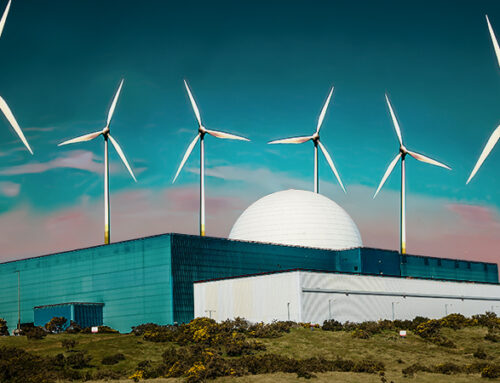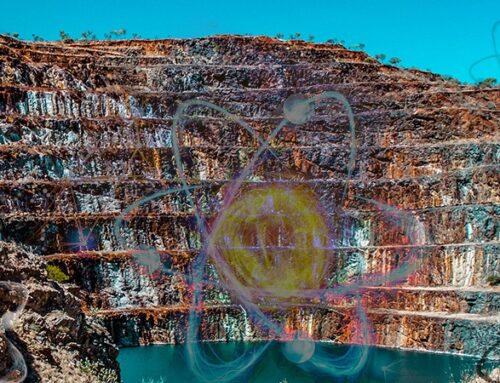The troubled European Pressurised Water reactor technology hit new problems this week with EDF announcing further cost overruns at its next generation nuclear project at Hinkley Point C. “Challenging ground conditions” have meant the cost of the project has risen by a further £2.9 billion, to £22 billion, compared to an original budget of £18 billion.
EDF has also indicated that there may be further cost increases, which will be met by the company and its construction partner, China General Nuclear Power Corp (“CGN”). The cost increase means that the IRR for Hinkley Point C is now between 7.6% and 7.8%, compared with a range of 8.5% – 9.0% in July 2017.
The project is also 15 months behind schedule, with EDF and CGN saying that while they are still aiming to finish the work in 2025, the chance of delays into 2026 has increased.
These problems are likely to cast doubt over Sizewell C, the other EPR project planned by EDF in the UK, not least because the Hinkley Point scheme was barely approved by the company’s board.
Trouble with EDF’s French reactors
This news follows closely behind further delays on its flagship plant at Flamanville in France which has been affected again by problems with inadequate welds. ASN, the French nuclear regulator, instructed EDF to repair eight faulty pipe welds in the secondary main cooling loops before the plant can enter service.
These problems were identified in June, and subsequently, EDF has found “a deviation from technical standards” in manufacturing of certain components on its in-service reactors, in particular the weldings on some of the reactors’ steam generators, installed by its subsidiary Framatome (formerly Areva).
 This raises the prospect of further closures, following the round of closures in 2016/17 when the discovery of excess carbon levels in the steel reactor vessels, forced around a third of its 58 French reactors to undergo safety tests. Not all of the reactors are affected, as EDF used other suppliers including Westinghouse and MHI, and Framatome did not always use the same welding procedure.
This raises the prospect of further closures, following the round of closures in 2016/17 when the discovery of excess carbon levels in the steel reactor vessels, forced around a third of its 58 French reactors to undergo safety tests. Not all of the reactors are affected, as EDF used other suppliers including Westinghouse and MHI, and Framatome did not always use the same welding procedure.
Other quality issues have been identified. In August EDF said it had found more than 200 irregularities in materials supplied by the alloys division of Eramet for its nuclear plants. ASN said the irregularities required “specific management”, but that they did not make any of the materials unfit for use.
In response to all of these problems, ASN has now decided to place units 1 and 2 at Flamanville under increased surveillance citing shortcomings in maintenance, contractor oversight and low quality documentation. Flamanville 1 and 2 are 1330 MW pressurised water reactor units that began commercial operation in 1986 and 1987.
ASN identified three areas for scrutiny: the control of maintenance and operating activities and associated documentation; the management of experience feedback, in particular, the reporting of significant events to ASN; and the priority given to safety issues in decision-making. The problems at the Flamanville 1 and 2 are not directly related to the issues with the new reactor which is a decade behind schedule and whose cost has tripled to nearly €11 billion with further increases likely. EDF’s two-unit Belleville plant has been under increased surveillance since 2017.
Does EDF have an appropriate safety culture?
In 2018 the French parliament carried out an investigation into nuclear safety and security, which concluded that France’s nuclear plants are a safety threat because of their excessive reliance on outsourcing, the risk of terror attacks and a lack of operational rigour. Despite these serious findings, there has been no follow-up from the report.
80% of the maintenance carried out on EDF’s nuclear reactors is handled by external contractors, leading to a loss of internal competence, and there have been multiple quality control issues with these contractors.
“There is a chain of control from reactor builder Framatome, to nuclear plant operator EDF and regulator ASN, but it has been demonstrated over and over again that this chain of control is malfunctioning. Every few months there is a new problem,”
– Mycle Schneider, author of the World Nuclear Industry Status Report
The British nuclear regulator, the ONR, has also identified shortcomings in EDF’s procedures relating to supply chain management, although with lower levels of severity. In late 2017, an inspection that was launched in response to the carbon problems found shortfalls in Hinkley Point C’s management systems that, if unresolved, had the potential to affect safety.
An inspection this year found deficiencies in the welding processes including use of unqualified staff who were relying on translators to communicate the Weld Procedure Specifications, and production methods that do not adequately control the risk of corrosion during service.
While the ONR has not judged EDF’s processes at Hinkley Point C to be inadequate, the scale of failures identified by the ASN is a real cause for concern and should lead to an increase in the ONR’s scrutiny of the project.
What are the wider implications for new nuclear in the UK?
Clearly, the problems EDF is facing are negative for the future of nuclear power in the UK, however, as I have said previously, the EPR was always the wrong technology choice. The Government still has the option to re-open discussions with Horizon in relation to the Wylfa Newydd scheme, and, as Advanced Boiling Water Reactors (“ABWRs”) have been built on time and on budget in Japan, there can be a much higher degree of confidence that the project could be successfully delivered.
Relying on EDF is risky, not only because of the concerns over supply chain management and whether the company genuinely has the expertise to deliver the new reactors, but whether it will be willing to put more capital at risk at Sizewell C. EDF’s board may well refuse to approve the project, having only just agreed to go ahead with Hinkley Point C.
With the forthcoming retirement of the remaining UK coal plant over the next few years, and with country’s nuclear fleet aging, the Government needs to take decisive action to deliver reliable baseload generation that will meet the country’s needs over the next decade, particularly in the absence of the capacity market. If it does not resurrect the Wylfa project, and in the face of further delays at Hinkley Point, this might lead to a renewed focus on gas. Post Brexit, the Government will at least (probably) have the freedom to deploy technology-specific subsidies if it so chooses.






I was surprised to hear that there were problems with the ground conditions – considering the previous Hinkley power stations nearby.; I would have thought that that previous construction would have supplied knowledge – unless ground conditions change a lot in a short distance.
Or perhaps information was not shared between the construction/surveying people.
Also there is no information as to how much (out of the £22bn) was budgeted originally for dealing with “ground conditions” – and how this might have compared with previous constructions.
Perhaps this malaise (and hiding of information) is typical of some of the UK construction companies and their financial difficulties. And it does not inspire confidence in the planning abilities/skills of EDF (nor do the comments as to control of welding and materials)